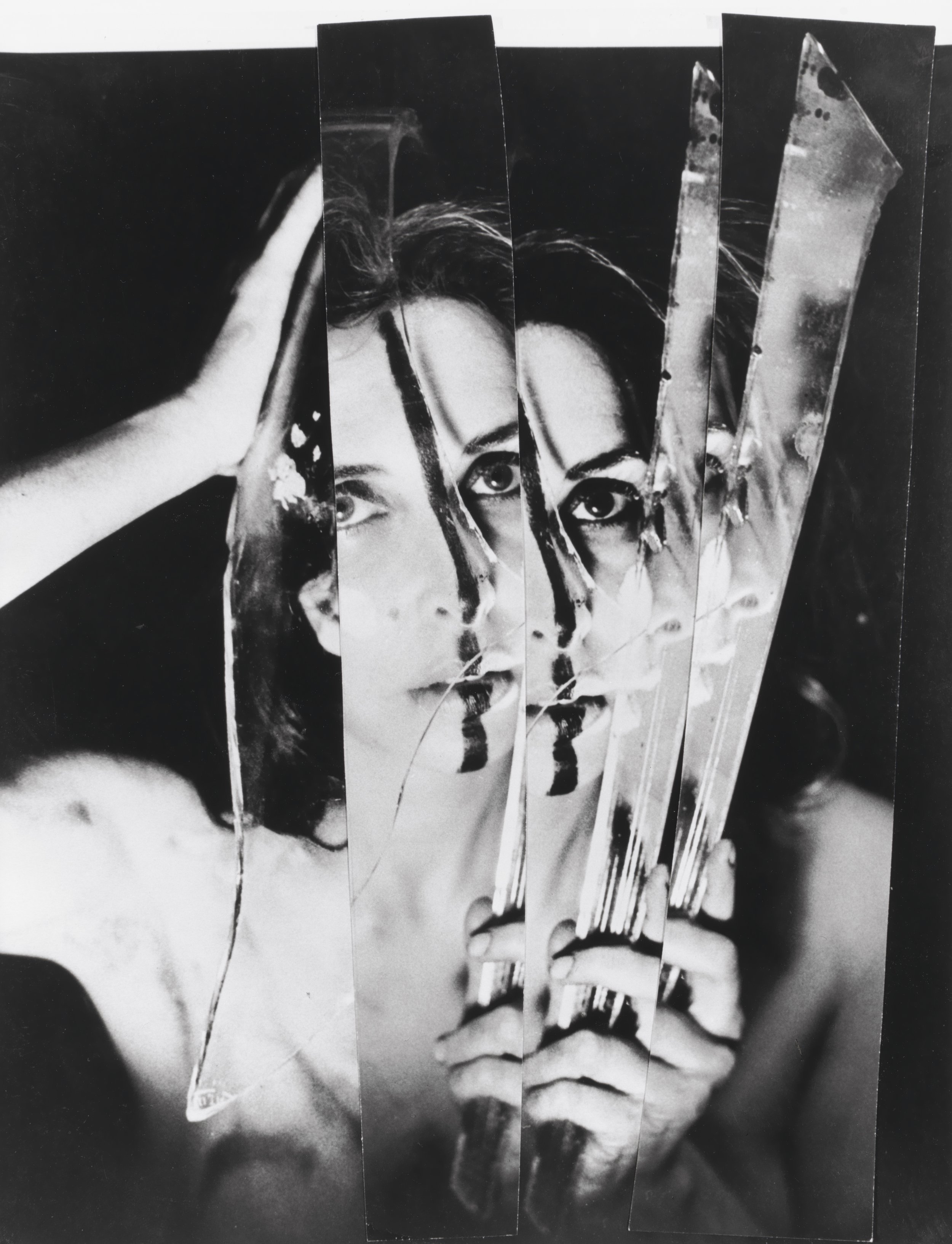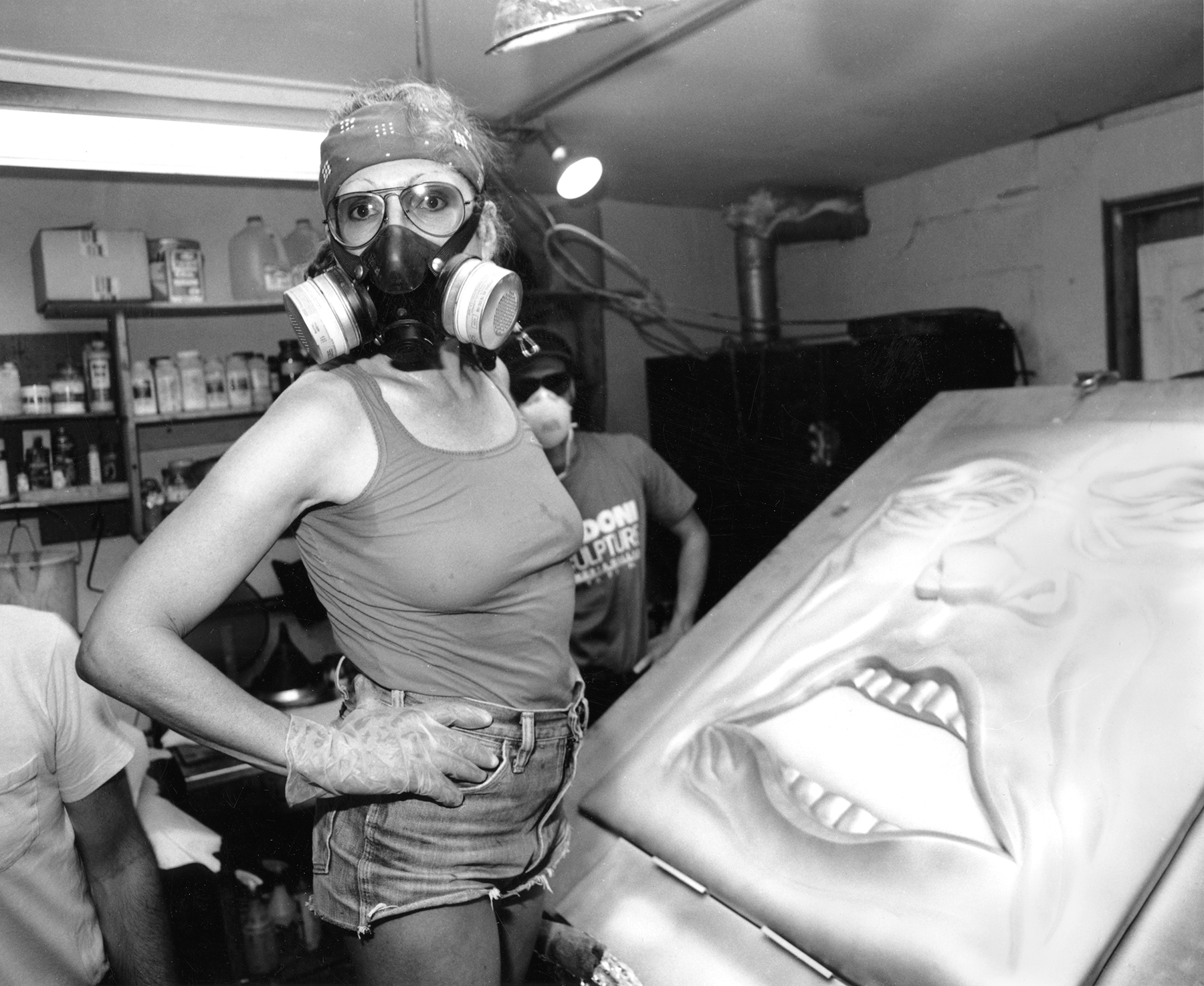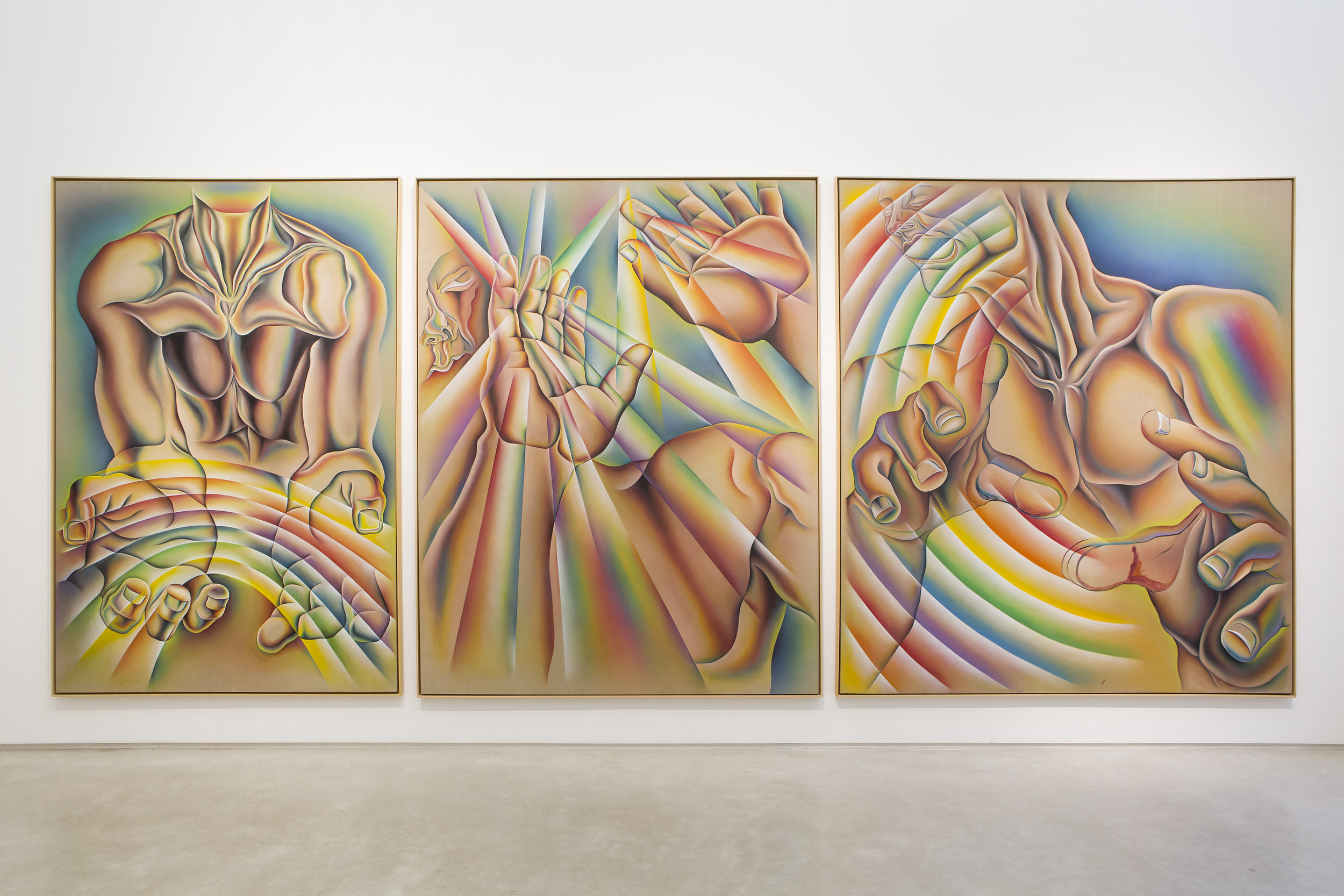Forgive me if I call them by their first names. Carolee Schneemann and Judy Chicago. They may be fed up with being linked. But it's impossible to see the shows at PS 1 and the Brooklyn Museum and Salon 94 without making the connections both to each other and to our current feminist moment. They represented sisterhood, and women's liberation, terms that fell out of favor, but seem to have been reborn, at least partially, in #MeToo.
Born exactly the same year, 1939, often lumped together as second-wave feminist leaders and first-wave feminist artists because they were so bold, there were still differences. Like Schneemann, Chicago was interested in the body but Chicago did not privilege the erotic or her own body in a performative practice, though she also has been interested in the birth process and in the sources of male power. Both had a reverence for the first wave feminists, Mary Wollenstonecraft, Virginia Woolf et al.
Schneemann said at the outset she was interested in undoing the separation between painting and life, and used multidisciplinary interdisciplinary art forms-- dance, theater, music, visual art, etc-- to get at the question, “ Can I be both an image and an image maker?"
She had no fear and also no modesty. She literally threw her whole body into situations—although with a great deal of forethought and planning--and waited to see what the consequences of her actions might be. Fire, rope, film, menstrual blood, internal scrolls that she withdrew from her vagina, these were just tools to get at the truth even though she always thought of herself as a painter. But she wanted to take painting beyond the canvas and substituted her own body and the bodies of others as brushes to make her mark. In the beginning there are the traces of de Kooning and Rauschenberg in the work but pretty soon it is all Schneemann. And having just seen the Gunter Brus show in Vienna, (born 1938) we see that Schneemann wasn’t alone in using her body as her primary arsenal.
An interesting factoid: In art school, she was allowed to pose nude for the male artists in her class but not to do a nude self-portrait. She was always rebellious, dropped out of high school, and made one of the first art films that was simply a very tight shot on her own heterosexual sex act with her partner from different angles—also the cat’s--her constant companion and alter ego.
Meat Joy, which was once characterized as ‘Ab Ex meets Busby Berkeley’ was an early performance piece. “Only I knew the destination but they would discover it for themselves,” she said of its participants who also included Dorothea Rockburne. The names of the groups and the performers and creators pop out at me like way-stations: the Living Theater, Judson Dance Theater, Stan Brakhage. Just like vintage fashion, with vintage feminism, everything old is new again.
Still, when critics --and even the artists themselves--depend so much on theory and start throwing around terms like ‘ intersubjective interdependency’(from the Schneemann catalog)—completely echoing a base in the theoretical as much as any Abstract Expressionism, a movement they theoretically had put aside, my eyes glaze over. When I am spending more time looking at wall labels then on art, I know I am in a realm that feels artificial.
But I came away from all of these shows respecting these artists and their resistance to male-dominated imagery and I was newly impressed how ambitious and original these women were.
This brings me to the fact that neither of them has biological children (Chicago says she could never have had the career she has had with children), but they have many artist-children and acolytes. In those earlier days of feminism, it seemed to be either or. You had to commit to artistic practice or piano practice there wasn’t an in between. It's a subject that interests me as I see the divergent lives of my friends with children and without.
After The Dinner Party and the The Birth Project, Chicago wanted to turn the tables on the male gaze. Power Play, at Salon 94 Bowery, works from 1982-7 does so with gorgeous air brushed imagery of men in full power-mode display. Whether peeing or sticking their tongues out, the paintings have a Soviet era image ethos that I was hyperconscious of after my trip to Eastern Europe. Though this body of work apparently got scant attention when it was shown contemporaneously, now, the work seems remarkably prescient.
“I knew that I didn’t want to keep perpetuating the use of the female body as the repository of so many emotions," said Chicago at the time, "it seemed as if everything — love, dread, longing, loathing, desire, and terror — was projected onto the female by both male and female artists, albeit with often differing perspectives. I wondered what feelings the male body might be made to express, ”
Anyone interested in #MeToo (which should be everyone) should see these important exhibitions. They close soon.
Chicago’s Dinner Party is at a permanent install at the Brooklyn Museum and a show about its origins closes on March 4.
The Judy Chicago Power Play show closes at Salon 94 on March 3
The Carolee Schneemann show closes at PS 1 on March 11.
Image credits:
Carolee Schneemann. Meat Joy. 1964. Chromogenic color print of the performance in New York. 5 × 4" (12.7 × 10.2 cm). © 2017 Carolee Schneemann. Courtesy the artist, P.P.O.W, and Galerie Lelong, New York. Photo: Al Giese
Carolee Schneemann. Eye Body: 36 Transformative Actions for Camera. 1963/2005. Eighteen gelatin silver prints. 24 x 20" each (61 x 50.8 cm). The Museum of Modern Art, New York. Gift of the artist. © 2017 Carolee Schneemann. Courtesy the artist, P.P.O.W, and Galerie Lelong, New York. Photos: Erró, Courtesy MoMA PS 1
Power Play, Judy Chicago at work, and the work itself, courtesy Salon 94



